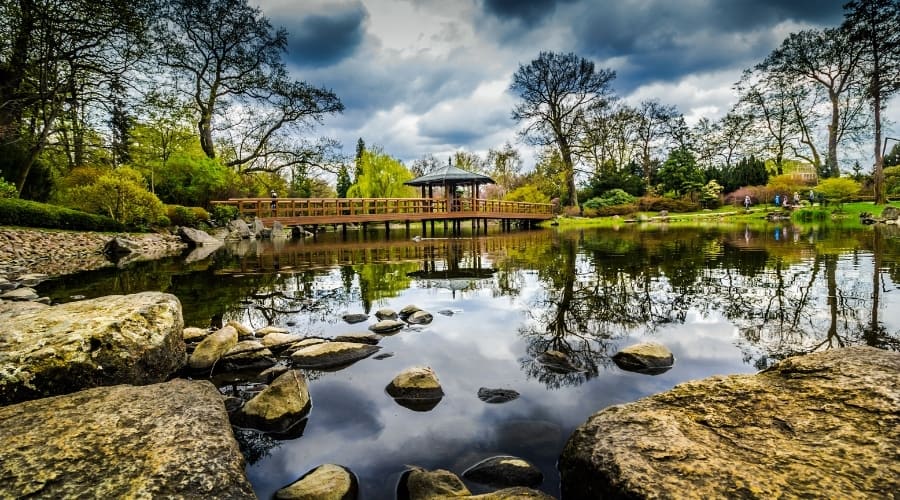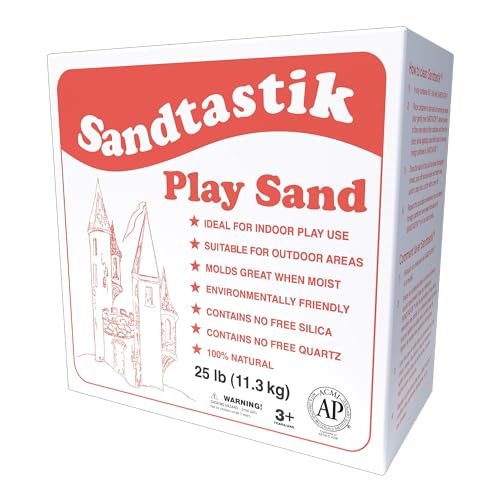There are over 1.5 million ponds in the USA, and that’s not counting the artificial kind. Adding a water feature can be relaxing, and it can help cool your yard.
However, not all ponds are desirable, like when you live in the desert, and it evaporates unusually fast, wasting water. What’s the best way to fill a garden pond?
The best way to fill a garden pond is by adding water with a hose. Fill any cracks in the liner with mortar before adding water. If you want to get rid of the pond for good than you need to drain the water with a water pump, remove the liner, and fill it in with rocks and dirt.
Before you fill a garden pond, the vital question you need to ask is, what do you intend? Are you looking to have a pond, or do you want to remove or repurpose one that isn’t useful anymore?
The answer will determine how you proceed. Below I have included several methods to choose from.
Table of Contents
What Is The Best Way To Fill A Garden Pond With Water
Whether your pond is brand new, new to you, or it’s been empty for a while, putting water in is only part of the filling process.
Below I walk you through everything you need to know. This method has optional steps for adding aquatic creatures or plants.
- Collect your supplies. You need a hose, or plumbing pipe with a shovel, a water pump for circulation, any plants or fish you plan to put in the pond, and you may need some mortar.
- Ensure that your pond is solid. Check for a liner and use cement or mortar on any cracks. This step is essential to the function of your pond. If necessary, you can place a new liner inside the pond, but most existing artificial ponds already have them inserted.
- If you are using a hose, connect it to your tap. If not, see the next step.
- You can dig a trench and bury a water pipeline if you want to run water at will. This is usually reserved for professional plumbers and dedicated DIYers who want to put in a waterfall.
- Wire your pump and place it in the pond to circulate the water. Make sure you bury or place the electrical cord out of the way. Some people prefer to use a PVC pipe to run the line down into the water, but it’s up to you aesthetically.
- Next, add water. Unless you’ve used rainwater or purified water, you’ll want to let this sit for a day. Most wastewater treatment plants use chlorine, and it will evaporate if you give it time.
- Last, you’ll add fish and plants if you choose to do so.
What Is The Best Way To Fill A Garden Pond With Dirt
If you are filling a pond with dirt, the most likely reason s to make it disappear. However, if you plan to use it like a raised garden bed, then make sure you choose appropriate garden soil instead of regular dirt.
Follow the steps below using your dirt of choice.
- Collect your supplies. You’ll need a shovel and dirt. A wheelbarrow for easy earthmoving and seeds for planting are optional.
- Drain any water from your pond with a water pump.
- PROFESSIONAL POND WATER PUMP: Submersible water pump keeps water always flowing and works on land or fully submerged in water. Perfect for ponds, fountains, waterfalls and filtration systems!
- DURABLE PUMP CONSTRUCTION: Oil-free design with ceramic impeller shafts provides a reliable, long-lasting fountain water pump that resists damage, keeps water flowing, and has a GPH of 3100
- ENERGY SAVING WATER PUMP: Features an energy-saving design that will save you money, while providing an eco-friendly and efficient water pump system that's good for the environment
- EASY INSTALLATION: Pump can be used vertically or horizontally for convenient placement in your pond, and has a 33' long cord for easy placement and accessibility
- EASY MAINTENANCE AND IDEAL SIZE: Includes a large pre-filter for easy disassembly and ease of replacement, and pump measures 8"L x 5" W x 6"H for use in ponds up to 33' wide
Last update on 2024-04-25 / Affiliate links / Images from Amazon Product Advertising API
- Remove any pumps or water pipes as these should not be left within the earth for safety and environmental reasons.
- Pull out the rubber (or other material) liner. Almost all ponds have this feature.
- Many ponds have larger rocks around the edge to hold the rubber liner in place. If you want them out of the way, toss them into the bottom of your pond. Likewise, if you plan to grow anything, you may want a layer of larger rocks or at least gravel in the base for better drainage.
- Backfill the remaining space with dirt. You can buy bags or simply dig some from around the yard.
- Make sure you level off the dirt. It may sink some after the first rain, so plan to add more topsoil later. Moreover, if you don’t want the soil to erode, you should probably plant something in the old pond, even if it’s just grass or handfuls of local wildflower seeds. The roots will hold it in place.
What Is The Best Way To Fill A Garden Pond With Rocks
Filling a garden pond with rocks is a lot like filling one with dirt. Primarily, you need rocks, and you might need a shovel or wheelbarrow, and you can choose regular rocks or decorative as you prefer.
However, if you opt only to fill the old pond with rocks, you may find you have a problem with rainwater pooling.
As a result, I do not recommend this method. Anyone can drain a pond, pull out the pumps and toss rocks in their place.
Unfortunately, rocks leave large open spaces for water to collect. Mosquitoes love stagnant water. Please do not fill your old pond with rocks.
If you fill an old pond with rocks, please cover those rocks with a layer of dirt. Dirt will keep mosquitoes from building a sizeable colony in your outdoor space. These pests are more than merely annoying.
According to Mosquito.org, they are responsible for carrying diseases that kill about a million people every year.
What Is The Best Way To Fill A Garden Pond With Sand
Sand is a lot like dirt when it comes to filling a pond. However, you will also need to add soil on top unless you use the old pond as a sandy play area for children.
For a standard get-rid-of-it fill, just put about eighty percent sand in and then add dirt on top.
Otherwise, follow the directions below to make a unique sandbox.
- Get your materials ready. For this conversion, you will need a new, durable liner, an optional wheelbarrow, and a custom-fitted waterproof lid.
- Clear out your pond as described above. Remove the water, pumps, plumbing lines, and the original liner. Removing the liner is a safety measure because of the slime and organic material that accumulates at the pond’s bottom.
- Install a new liner and ensure you weigh down the edges.
- If your lid has hinges, you’ll install it now. Otherwise, you can place it over the pond once it’s filled.
- Fill the pond with play sand. Other types of sand are too abrasive for children’s skin, or they can have debris inside. I recommend Sandtastik Sparkling White Play Sand from Amazon. Not only does it look great, but it’s great for building sandcastles.
- LEARN! Experience the transformative power of sand as it enhances you child's fine motor skills, hand-eye coordination, and sparks limitless imagination through its tactile and sensory stimulation.
- CREATE! Ignite your child's creativity, foster imaginative visualization, and inspire joyful social interactions with Sandtastik Sparkling White Play Sand.
- NON-TOXIC! Our process begins with a specific type of silica-deficient rock and ends with the safety approval from the Toxicology Professionals at a University School of Medicine.
- VERSATILE! Inspire boundless creativity and exploration with a medium that empowers children to dig, pile, sift, and shape, unlocking endless possibilities for imaginative play.
Last update on 2024-04-25 / Affiliate links / Images from Amazon Product Advertising API
- Make sure you close a lid over the sandbox when it’s not in use. Doing this will prevent animals and insects from getting inside. Plus, it will stop rain from turning your sandbox into a mold breeding ground.
What Is The Best Way To Fill A Garden Pond Waterfall
Pond waterfalls aren’t something you fill. Because they are elevated above the pond itself, you use a pump.
These are typically built into the waterfall when it is first constructed, to move water up from the pond so it can spill down. If you ‘fill’ the waterfall, you will only overflow your pond.
Similarly, you can’t backfill a waterfall with dirt or rocks. Instead, you’d need to knock the waterfall down and haul away the original materials or simply dump enough dirt to build a hill where the waterfall used to be.
Helpful Tips To Know About Filling A Garden Pond
Filling a garden pond isn’t a complicated decision. Even if you need to dig a trench or remove a pump, this is a project most beginners can easily handle.
Here are more helpful tips to know about filling a garden pond.
- Garden ponds with water inside them need to be treated for algae and other undesirable growth. Make sure you don’t let your pond harbor bacteria, unchecked algae, and other ‘bad’ living organisms.
- A garden pond is perfect to create a raised garden if you don’t want a water feature. Choose plants that would otherwise take over your yard and need to be contained, like mint, or those that don’t make good companions for the plants you already have.
- If you choose to make your garden pond into a sandbox by filling it with sand, don’t forget to sanitize it every month or so. Use a 1/1 mixture of bleach and water on the surface of the sand and then use a shovel or rake it in to mix it. According to PlaygroundResource, you can also use a sifter to help remove larger debris.
Final Thoughts
The essential part of pond filling is deciding what you want the result to be. If you’re looking for a koi pond or like water lilies, remember to let the chlorine evaporate for a day or two before adding anything living to your pond.
Additionally, you may need to treat the pond to prevent algae and other undesirable growth. Meanwhile, if your goal is to fill the pond to prevent water from getting in, turning it into a garden bed or sandbox is your best options.
Never fill a pond with ‘just’ stones, or you could end up breeding mosquitoes.



